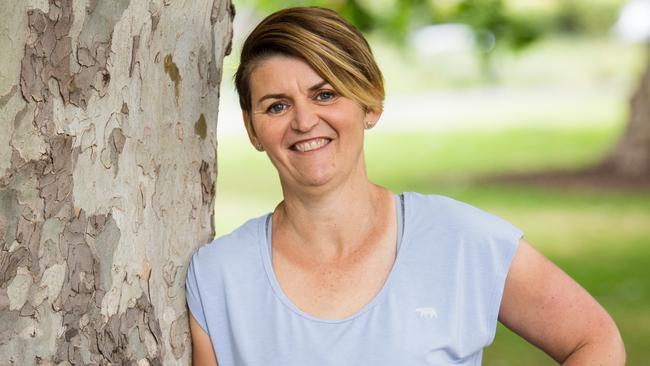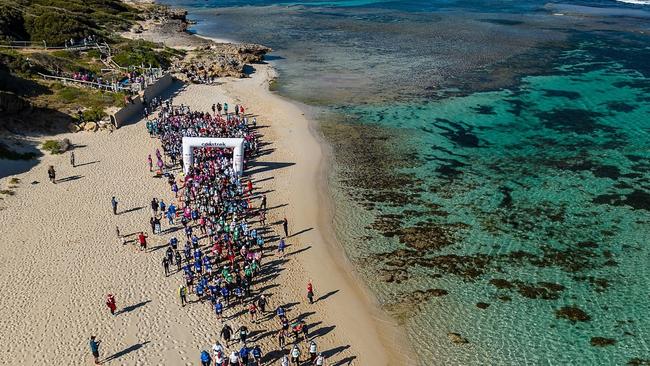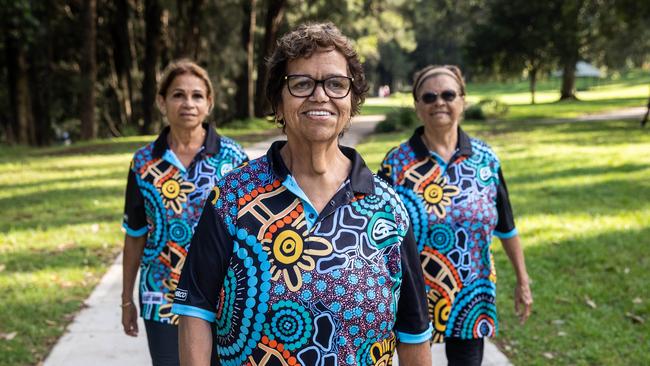Need help to get moving? Don’t set your goals too high
Australia’s wealth of walking events gives ample chance to aspire to better health, though exercise psychologists argue an open goal may give as much incentive.

Building an exercise routine is a formidable commitment, often a journey to hard-fought milestones, though exercise psychologists argue it may help to go easy on yourself and strip out the chance of failure.
For the final part of The Australian’s series on walking, in collaboration with the Heart Foundation, we are focusing on how to stay motivated – and the national calendar for walking events can give you a goal to step towards.
Southern Cross University health faculty professor Christian Swann said aiming for an event or benchmark was a strong way to maintain motivation when paired with short-term goals.
“The fundamental premise of goals is that they give us direction and something in the future that we desire to reach, so in that sense they can be very useful,” he said.
“For the last three or four decades, goals have been set in a very similar way. Typically the advice out there involves setting specific goals based around some kind of numerical target; walking 10,000 steps is a very common one, or the activity guidelines.
“Interestingly research in the last 10 years or so has started to ask questions about whether that approach is likely to be beneficial.”
Professor Swann cited a 2016 study that indicated no rise in overall fitness activity between those instructed to exercise more in general and those given a metric to reach.
“Our team is working on what we call open goals where, rather than asking someone to pursue 6000, 8000 or 10,000 steps, we ask people to see how many steps they can reach each day,” he said.
“What we’re seeing so far is that they are a lot more flexible. It removes the possibility of failure.
“It relieves a lot of pressure. If people have tried specific goals and haven’t had much success then there’s absolutely nothing to lose by trying out an open goal to see how active they can be.”
Step out for a healthier life
He argued sticking to unwieldy goals left the door open to demoralisation or unwittingly hurting your body more than helping it.
One such case is Maryanne Osborne. She once revelled in a constant rhythm of high-intensity exercise, a gruelling regimen that made her feel invincible. When it was ripped away from her six years ago, she went through a “massive upheaval”.
Ms Osborne, then 47, would train religiously six days a week. She knew things were wrong when she began tiring sooner but attributed it to perimenopause.
When she went to the doctor, a routine electrocardiogram revealed how precariously over-dilated her heart had become. She was diagnosed with cardiomyopathy.
“I was extremely fit. I was training six days a week and really didn’t show any obvious symptoms,” she said.
“Exercise was always my release. It was my identity. It was everything attached around that.
“If I knew back then what I know now, I probably would have trained very differently as well because I’ve probably done a lot more damage to my heart function by training at such high intensity.”
Quickly taken to surgery, she was implanted with a cardiac resynchronisation therapy defibrillator, a device to keep track of the heart’s rhythm, spot irregularities and quickly fix them with an electric jolt or a lifesaving shock.

The sudden diagnosis meant she could no longer push herself to the limit; instead she was ordered to keep her heart rate below 120 beats per minute at all times.
Walking became one of the last forms of exercise she had left.
“Post-surgery, I think reality hit, and it became a lot more of a mental battle for me than physical,” she said.
“People around me at cardiac rehab were all in their 70s, and I guess that made me quite angry as well. It was like ‘why is this being taken away from me?’ So there was a lot of mental struggle.
“I had to switch my mindset from what I couldn’t do and put it into what I could do, as limiting to me as it was … I had to learn, over time, to accept not only that that’s what I could do but to embrace it.”
In the long mental battle to reach satisfaction with her pared-down routine, Ms Osborne saw her return to event exercise as a crucial step.
For Ms Osborne, having bowed out from the tight-knit community of gym junkies in which she had once been at home, the 2021 City2Surf in Sydney marked a return, albeit at walking pace.
“Finding that collective energy or that inspiration from other people, is something that I find I draw on,” Ms Osborne said.
If you signed up for the Heart Foundation’s personal walking plan at the start of this series, you would now be wrapping up, or at least on your way to finishing the program.
But there’s no reason you can’t start right now if you haven’t signed up yet. All you need is a bit of motivation.
WALKING EVENTS
NSW
The charity fundraiser Coastrek provides walking challenges through the year and across the country, reaching Sydney on April 4. All participants end their journey at Coogee but can begin 50km away at Middle Head, Mosman, 30km away at Rushcutters Bay or 20km from Vaucluse.
The City2Surf, held in 2025 on August 10, brings thousands from Sydney’s city centre to Bondi Beach along its 14km span.
The Kokoda Challenge team events, held nationally, involve groups of four travelling up to 96km and require weeks of training. The Sydney event also offers distances of 18km or 48km and is held on September 20 over Heathcote National Park and the Royal National Park.
Finally, the Bloody Long Walk in Sydney’s east raises money for the Mito Foundation. It covers 35km on November 16.
Queensland
Queensland has a string of treks along the coastline, namely its Kokoda Challenge events on the Sunshine Coast, in Brisbane and along the Gold Coast. On the Sunshine Coast, held on May 10, participants can trek 18km, 30km or 48km. The Brisbane course, held on June 7, covers the same distances while the Gold Coast’s challenge on July 19-20 offers 30km, 48km and 96km.
The Great Island Trek, held each year on Magnetic Island, covers 16km and 25km journeys. In 2025 it’s on June 7.
Finally, those eager can return to the Sunshine Coast for the Coastrek on July 18, with starting lines 20km, 30km and 50km from the finish.

Victoria
Victoria’s autumnal Great Aussie Hike begins in Daylesford on May 2, trekking through Imbil State Forest for 18km, 30km or 48km.
Travelling southeast, Coastrek’s Mornington Peninsula walk takes place on May 23 with 20km, 30km and 50km options.
The 35km Bloody Long Walk Mornington is on October 19.
Western Australia
City to Surf makes its way west on August 31. The 12km trek stretches from St Georges Terrace at the Perth City Council Chambers to Jubilee Park in City Beach.
South Australia
The Fleurieu Peninsula is home to South Australia’s Coastrek walk on September 5, stretching 20km and 35km. Adelaide’s 35km Bloody Long Walk is on October 26.
Canberra
Canberra’s 35km Bloody Long Walk reaches the capital on November 9.








To join the conversation, please log in. Don't have an account? Register
Join the conversation, you are commenting as Logout